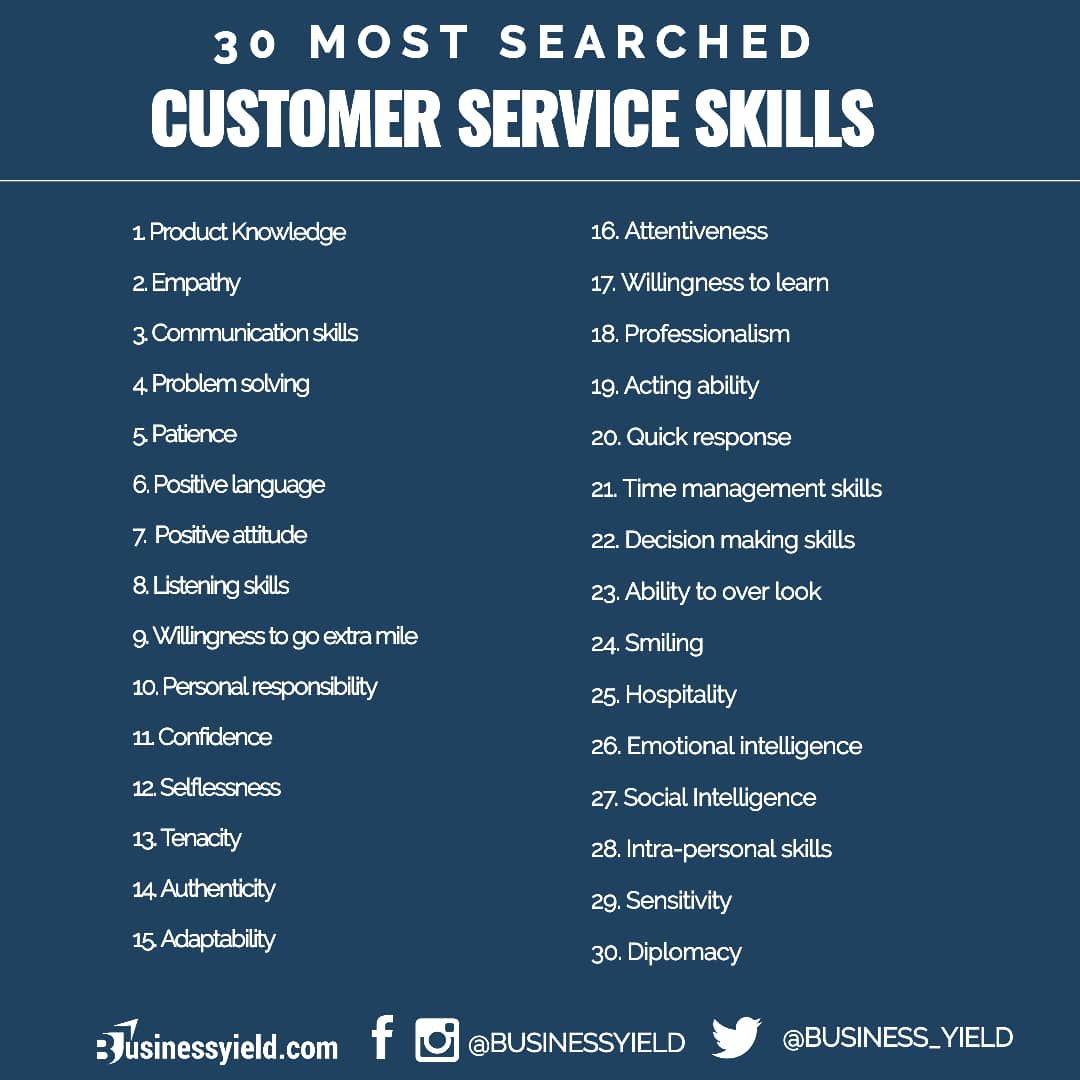Every business in the market today should have a grasp of customer satisfaction, as this can be the key to remaining in the market in the long run. The importance of ensuring that one’s customers are satisfied cannot be over-emphasized. Customers who are pleased with the service they receive are more likely to become repeat buyers and promoters for the brand, increasing positive word of mouth and propelling business expansion. However, what are the ways a business can effectively boost customer satisfaction? Are you looking to establish a customer-centric approach that makes a lasting impression? Then read on as we explore effective ways of boosting customer satisfaction, how to carry out customer surveys and what survey questions to ask.
What is Customer Satisfaction?
Customer satisfaction refers to the degree to which a customer is happy with a product, service, or experience related to a business. It is measured through customer satisfaction survey questions, which is asking customers about their experience and their level of satisfaction. Also, it considers various aspects of the customer experience, such as product quality, customer service interactions, and overall brand perception.
Overall, it is an important business metric because it can impact customer retention, word-of-mouth marketing, and overall business performance.
Why Customer Satisfaction Matters for Businesses
Customer satisfaction matters for businesses because it offers various benefits to their success. Those benefits include:
#1. Increased Competitiveness and Growth
Satisfied customers are likelier to remain loyal to a brand and continue using its products or services. Hence, increasing customer retention reduces the risk of losing customers to competitors. Additionally, satisfied customers are more likely to recommend a brand to others, which can drive new customer acquisition and increase business growth.
#2. Improved Brand Loyalty and Trust
High levels of customer satisfaction can foster a sense of loyalty and trust between customers and a brand. Satisfied customers are more likely to have positive perceptions of a brand and develop an emotional connection with it. This loyalty and trust can result in repeat purchases, increased customer lifetime value, and positive word-of-mouth recommendations.
#3. Increased Sales Revenue
Customer satisfaction has a direct impact on a company’s revenue. This is because satisfied customers are more likely to make repeat purchases, spend more money with a brand, and recommend its products or services to others. Research shows that a 10% improvement in customer experience can increase revenue in some industries by as much as $1 billion annually.
#4. Customer Retention
Satisfied customers are less likely to switch to a competitor and are more likely to remain loyal to a brand. They are also more willing to forgive occasional mistakes or issues and give the brand a second chance. Loyal customers spend more money and have a higher lifetime value, contributing to long-term business success.
#5. Support During Crises
Customer satisfaction can act as insulation against corporate crises. Satisfied customers are likelier to support a brand during difficult times and stick with it despite negative rumors or experiences. Hence, why building strong customer relationships through satisfaction can help mitigate the impact of crises and maintain customer loyalty.
#6. Informed Business Decisions
Customer satisfaction provides valuable insights into customers’ preferences, needs, and expectations. By measuring and tracking customer satisfaction, businesses can identify areas for improvement and make informed decisions to enhance their products, services, and customer experiences. Feedback from satisfied customers can also inspire new ideas for product development and help businesses stay ahead of their competitors.
Conducting Customer Satisfaction Surveys
A customer satisfaction survey is a questionnaire used to measure customer sentiment and gather feedback about a company’s products, services, and customer service. These surveys help businesses understand customers’ perspectives and experiences, allowing them to improve and better serve their customers. The surveys typically ask customers to rate their satisfaction on a scale from 1 to 5, with 5 being highly satisfied and 1 being highly unsatisfied.
How To Carry Out an Effective Customer Satisfaction Survey
To carry out a successful customer satisfaction survey, you can follow these steps:
#1. Determine the Purpose of Your Survey
Before creating customer satisfaction survey questions, clearly define your objectives and what you hope to achieve. Are you looking to identify negative themes, gauge loyalty, understand customer trends, gain a competitive advantage, validate business decisions, or shape the customer lifecycle? Clearly defining your goals will help you design an effective survey.
#2. Use a Customer Satisfaction Survey Template
You can use pre-designed customer satisfaction survey templates to simplify the survey creation process. These templates provide a starting point and include relevant questions that you can customize to fit your specific needs. Some popular survey tools, like Qualtrics and SurveyMonkey, offer free customer satisfaction survey templates that you can use
#3. Link the Survey to Specific Points in the Customer Journey
Timing is crucial when sending a customer satisfaction survey. Ideally, you should send the survey shortly after the customer has interacted with your product or service. Thus, ensuring the experience is fresh in their minds leads to more accurate and honest feedback. You can use multiple channels like email, online surveys, phone, or in-person to give customers options for providing feedback.
#4. Avoid Survey Fatigue
Be mindful of overwhelming your customers with only a few surveys. Ensure that you are not repeatedly surveying the same customers throughout their journey. Instead, focus on delivering surveys at strategic points where you can gather the most useful insights.
#5. Take Action Based on Customer Satisfaction Data
Collecting feedback is only valuable if you act on it. Once you have gathered customer satisfaction data, analyze it and identify areas for improvement. Address any issues or pain points promptly to enhance the customer experience.
#6. Choose the Right Customer Satisfaction Survey Questions
The questions you include in your customer satisfaction survey will depend on your specific goals and the stage of the customer journey you are targeting. Here are some question types you can consider:
- Rating-scale questions: These survey questions ask customers to rate their satisfaction or dissatisfaction on a scale. For example, “On a scale of 1–5, how satisfied are you with our product or service?”
- Open-ended questions: These questions allow customers to provide detailed feedback in their own words. For example, “What do you like most about our product/service?”
- Multiple-choice questions: These questions provide predefined answer options for customers. For example, “Which feature of our product/service do you find most valuable?”
- Net Promoter Score (NPS) questions: NPS questions measure customer loyalty and likelihood to recommend your product or service. For example, “On a scale of 0-10, how likely are you to recommend our product/service to a friend or colleague?”
- Customer Effort Score (CES) questions: CES questions measure the ease of using your product or service. For example, “How easy was it to resolve your issue with our customer support?”
- Customer journey-specific questions: Tailor your questions to specific touchpoints in the customer journey, such as purchase experience, onboarding process, or post-support interaction.
#7. Analyze and Act on the Survey Results
Once you have collected responses, analyze the data to identify trends, patterns, and areas for improvement. Look for common themes in customer feedback and prioritize actions based on the insights gained. Address any issues promptly and make necessary changes to enhance the customer experience.
Survey Questions About Customer Satisfaction
Examples of survey questions you can ask to determine customer satisfaction:
- How satisfied are you with our product/service?
- How likely are you to recommend our company to a friend or colleague?
- How responsive have we been to your questions or concerns about our products?
- How satisfied are you with the value for money of our product/service?
- How satisfied are you with the purchase experience?
- How satisfied are you with our customer service?
- How satisfied are you with the quality of our product?
- How satisfied are you with the warranty?
- How satisfied are you with the repair experience?
- What else would you like us to know?
Ways To Boost Customer Satisfaction
Steps a business can take to boost customer satisfaction include the following:
#1. Collecting and Acting On Customer Feedback
Gathering feedback from customers is essential to understanding their needs and expectations. Conduct surveys or use customer feedback management platforms to measure customer satisfaction and identify areas for improvement. Once you have collected feedback, it’s important to take action based on the insights obtained. Address any issues or concerns raised by customers and make improvements accordingly. For example, if customers mention that your onboarding sessions could be more helpful, work with your team to improve them. Hence, it shows that your business values customer feedback and is committed to providing a better experience.
#2. Improve Your Product or Service
Continuously strive to enhance your product or service based on customer feedback. Improving could involve adding new features, resolving performance issues, or making the product more user-friendly. Keeping customers informed about the progress of requested features or improvements helps maintain high levels of customer satisfaction.
#3. Reduce Wait Times
Long wait times can significantly impact customer satisfaction. Plan for and hire adequate support staff to ensure timely customer service. Anticipate situations that may lead to high call volumes or understaffing and take measures to address them proactively.
#4. Excellent Customer Service
Providing exceptional customer service is essential for customer satisfaction. This is particularly important in the hospitality industry, where guests expect help from staff members to make their stay comfortable. Constant innovation and meeting high expectations are key to improving customer satisfaction in this industry.
#5. Make Customer Satisfaction a Team Effort
Designate a team whose primary focus is customer satisfaction. Regularly meet as a team to discuss real customer complaints and comments and develop specific solutions that the entire business can implement. When customer satisfaction becomes a team effort, it becomes a concrete goal that everyone strives to achieve.
#6. Have a Team Leader
Appoint a leader for the customer satisfaction team who can oversee and guide the efforts. This person will coordinate the team’s activities and ensure that customer satisfaction initiatives are implemented effectively. Having a dedicated leader helps maintain focus and accountability toward improving customer satisfaction.
#7. Reward Excellence
Recognize and reward employees who contribute to customer satisfaction. Happy employees are more likely to provide excellent customer service, increasing customer satisfaction. Consider offering bonuses, time off, promotions, or other meaningful rewards to motivate and retain employees.
#8. Measure Customer Satisfaction
Customer satisfaction can be measured using various metrics, such as Customer Satisfaction Score (CSAT), Net Promoter Score (NPS), and Customer Effort Score (CES). These metrics help determine how well a company’s products or services meet customer expectations and predict business growth and revenue. It is important to measure customer satisfaction regularly to identify areas for improvement.
What Are the 4 Types of Customer Satisfaction?
The four types of customer satisfaction can be understood as different levels or metrics used to measure and assess customer satisfaction. They are not mutually exclusive and can be combined to understand customer satisfaction levels comprehensively. Each metric provides unique insights into different aspects of the customer experience and can help identify areas for improvement. They are:
Overall Satisfaction
This type of customer satisfaction measures the general opinion of customers regarding a product or service. It provides an overall assessment of customers’ satisfaction with their purchase decision. One way to measure overall satisfaction is to ask, “Overall, how satisfied are you with [Product X]?”
Customer Satisfaction Score (CSAT)
CSAT is a measure used to assess customer satisfaction. It directly asks customers about their satisfaction with a specific product, service, or experience. Customers are usually given a scale of options, such as 1-5 or 1-10, to rate their satisfaction level. The data collected can be analyzed to generate a CSAT score, which indicates the percentage of satisfied customers. For example, if 80 out of 100 survey respondents said they were “satisfied” or “very satisfied,” the CSAT score would be 80%.
Net Promoter Score (NPS)
NPS measures the likelihood of a customer recommending a company or product to others. It is usually measured using a survey with a single question: “On a scale of 0-10, how likely are you to recommend our company/product/service to a friend or colleague?” Based on the responses, customers are classified into Promoters (9-10), Passives (7-8), and Detractors (0-6). The NPS is calculated by subtracting the percentage of Detractors from the percentage of Promoters. NPS surveys provide insights into a brand’s appeal and competitive differentiators
Customer Effort Score (CES)
CES surveys are designed to understand customers’ efforts to use a product or service. It measures the ease of the customer’s experience and is often used to identify specific roadblocks or frustrations that users may face. CES surveys typically ask questions like “How easy was it to [complete a specific task]?” and respondents can choose options on a scale from 1 (very difficult) to 5 (very easy). CES is useful for companies looking to build seamless experiences.
What Are the 5 Stages of Customer Satisfaction?
The 5 stages of customer satisfaction are as follows:
Level 1: Least Customer Satisfaction
This level represents customers with the lowest satisfaction level with a company’s products or services. These customers may be dissatisfied or have had a negative experience. Businesses need to address their concerns and improve their satisfaction to retain them.
Level 2: Meeting Customer Expectations
At this level, a company is meeting the basic expectations of its customers. They provide products or services that meet the customer’s needs but do not necessarily exceed them. This level is important for customer retention, as customers who meet their expectations are likelier to continue doing business with the company.
Level 3: Exceeding Customer Expectations
This level goes beyond meeting customer expectations and aims to exceed them. Businesses can create higher customer satisfaction by providing exceptional customer service, going the extra mile, and offering additional value. Exceeding expectations can increase customer loyalty and willingness to pay more for top-quality service.
Level 4: Delighting Customers
Delighting customers involves creating an emotional connection and providing a genuinely delightful experience. This level goes beyond meeting expectations and focuses on making customers feel valued, cared for, and respected. By delighting customers, businesses can build strong loyalty and make it difficult for competitors to attract them away. Delighting customers can be achieved through personalized gestures, rewards, discounts, and special offers.
Level 5: Customer Delight
This level represents the highest level of customer satisfaction. It occurs when a company exceeds customer expectations to such a degree that it creates a sense of delight. Customer delight can lead to a high emotional bond with the brand and positive word-of-mouth promotion. It is the ultimate goal for businesses to reach this level of satisfaction.
Conclusion
In conclusion, competitive environments demand businesses to increase customer satisfaction. Satisfied clients are more loyal and promotes your brand. You can improve customer satisfaction and business success by collecting and acting on customer feedback, improving your product or service, providing excellent customer service, building strong relationships, streamlining processes, fostering a customer-centric culture, and monitoring customer satisfaction.
- Marketing Management: All You Need to Know
- EMPLOYEE FEEDBACK: Definition, Examples & When to Use Them
- CRUCIAL BUSINESS QUESTIONS for Small & Large Businesses 2023






